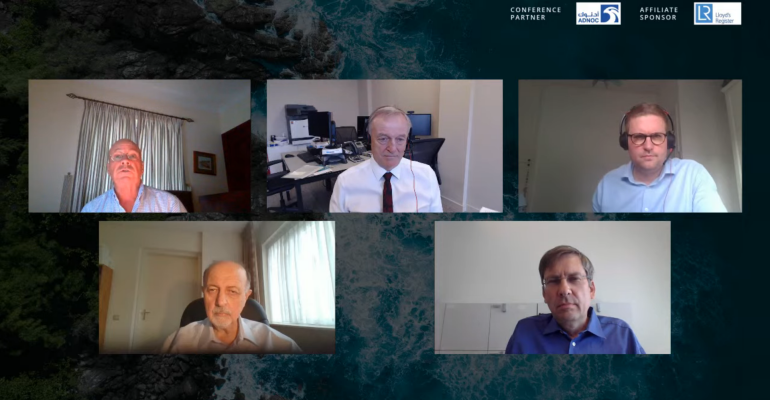Those were the thoughts of a panel of experts at the Global Maritime Club Virtual Forum - Spotlight on EEXI Regulatory Compliance hosted by The Maritime Online Series on July 1.
EEXI and CII are both global regulations aimed at reducing shipping’s carbon intensity. EEXI is a one-off look at the technical or design efficiency of a vessel, while CII will require demonstrable reductions in operational carbon intensity for vessels over 5,000gt from 2023 to 2030.
“I think there’s a general awareness that change is coming, but there’s work to be done in making sure that owners and operators understand the detail of what that means. I’m not sure there is a universal understanding of just quite the challenge CII may represent, whether it’s bulkers, tankers, containerships or other vessels,” said Matthew Williams, Principal Specialist, Strategic Regulatory Projects, Lloyd’s Register.
Williams warned that in the foreseeable future, ambition when it came to cutting carbon intensity was likely to continue to rise at the same rate it has in recent years, if not accelerate.
“The A to E categorisations which are associatied with CII at least for now carry little or no penalty, but it may well be the case that they may be applied by charterers to limit the supply of tonnage. For instance the charterers might say we only work with shipowners who operate in categories A and B,” said Tony Foster, CEO / CIO, Marine Capital.
“I would only say that with the caveat that charterers talk a good game when it comes to the type of ships they’re willing to charter, but when the market is very tight those self-made rules tend to be forgotten,” added Foster.
Markus Aarnio, Chief Naval Architect, Foreship Ltd laid out some of the options available to builders, owners and operators to reach improve EEXI ratings. Aarnio listed niche improvements like rotor sails and air lubrication systems through to engine upgrades, propellor and rudder improvements, hull form changes and switching to lower-carbon fuels. Permanently reducing a ship’s speed with engine power limitation and slow steaming were the main tools available, and the panel agreed that overridable power limitation was likely to be a popular option. Changes to GT and DWT could also affect the requirements of a ship.
Improving CII could be achieved through changes to the vessel’s operational profile such as changing to lower speed routes, using cold ironing where available, using battery systems charged in port and discharged at sea, and —for cruise ships—moving closer to the optimum CII speed for the ship’s hotel load.
Elias Boletis, Director, Business Line Propulsion, Product Line Propellers and Transmission at Wärtsilä said that while the company had many discussions with customers about preparing for EEXI and CII, the industry needed to realise that decarbonisation will be a key driver across the maritime sector in the coming years.
“It will be a key issue in the maritime industry in the coming period in the same way it became a key issue in the automotive industry, driving specific solutions,” said Boletis.
Equipment and technology manufacturers had a role to play in helping to reach the zero-carbon goal, said Boletis, by developing solutions using greener fuels like ammonia and hydrogen, and developing flexible fuel engines which have a clear upgrade path to less carbon intensive fuels. Hybridisation and the adoption of electrical power generation, storage and transmission holds promise for some sectors, and development of energy saving solutions would continue.
The panel said that awareness of EEXI and CII were growing, but preparation varied by sector. Container lines were generally ahead of the pack due to the better visibility they have over future employment prospects for a vessel, which made investment decisions in energy improving upgrades easier to justify and finance. Container lines also have the added benefit of being able to shift vessels from one route to another to manage CII by enabling slower operating speeds. Dry bulk carriers were identified as an area where awareness of action to meet the new regulations seemed lower and the greatest potential efficiency gains were avialable.
The panel agreed that it was important for owners and operators to beging planning for EEXI and CII immediately as time was running out.
Copyright © 2024. All rights reserved. Seatrade, a trading name of Informa Markets (UK) Limited.
Add Seatrade Maritime News to your Google News feed.  |

